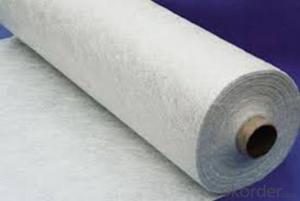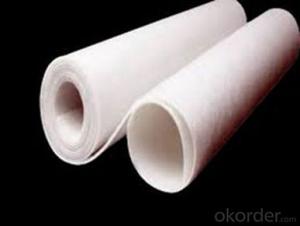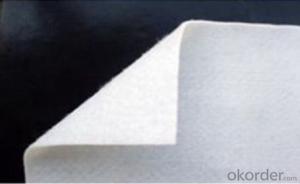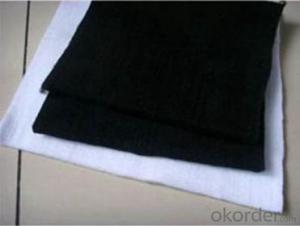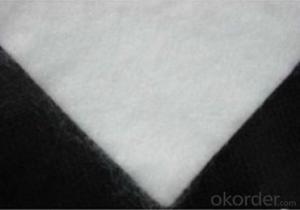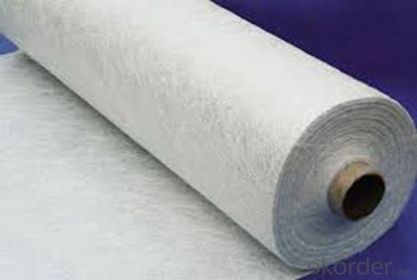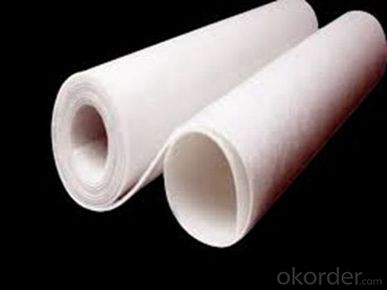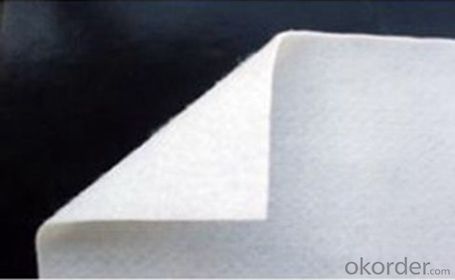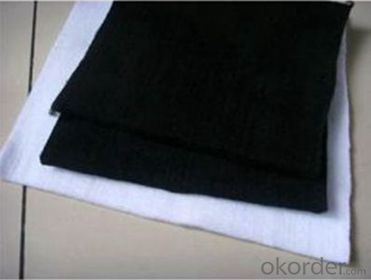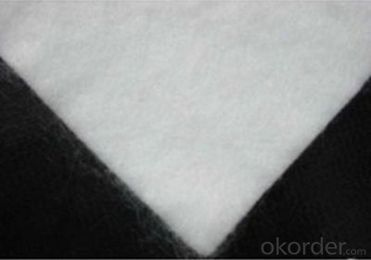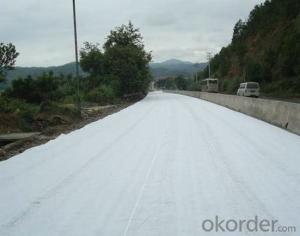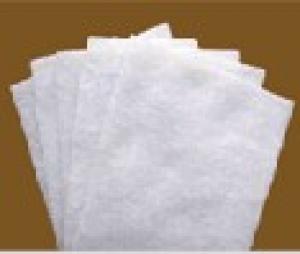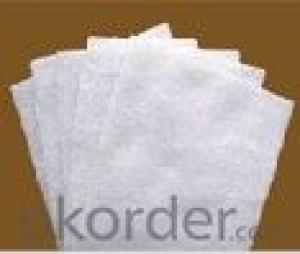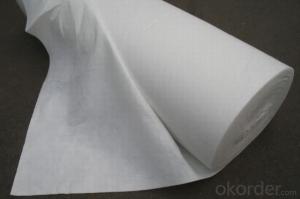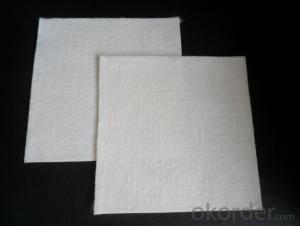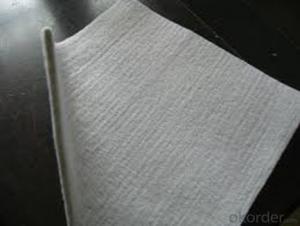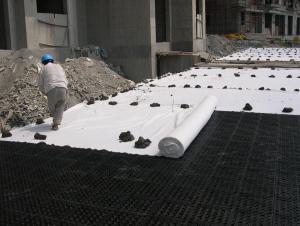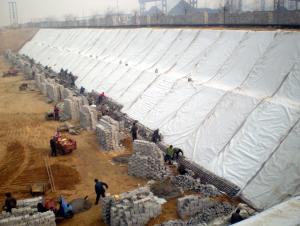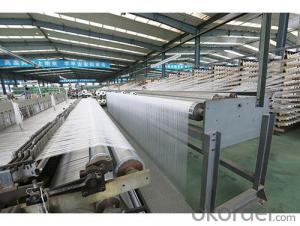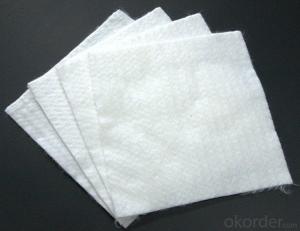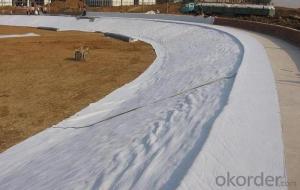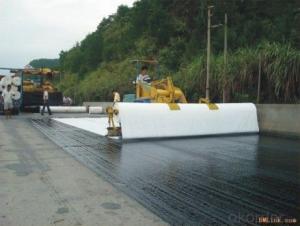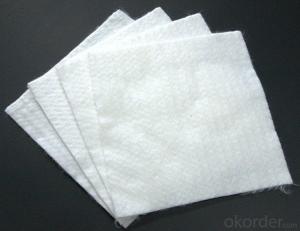Manto Geotextil Hot Sale Polyester Filament Woven & Nonwoven Geotextile
- Loading Port:
- China main port
- Payment Terms:
- TT OR LC
- Min Order Qty:
- 3000 m²
- Supply Capability:
- 1000000 m²/month
OKorder Service Pledge
OKorder Financial Service
You Might Also Like
Specification
Material: bean nylon polyester/ Non-woven flower
Pore diameter (mm) : 0.15
The runoff rate: 320
Tensile strength (N) : 160
Hydraulic flow (L/S), tongji university laboratory tests
Head loss 5 cm: 2.4
Head loss 10 cm: 3.2
Detailed Images
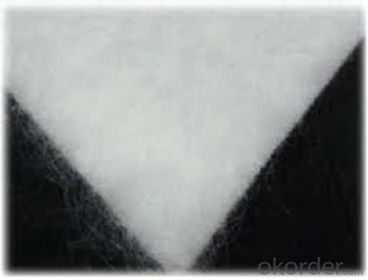
Packaging & Shipping
Packing: PLASTIC FILM INSIDE, AND WOVEN BAG OUTSIDE
Shipping: About 15 days after receipt the deposit
geotextile fabric
permeability,filtration,easy for construction
ISO and CE certificate
Good quality and competitive price
Our Service
Quality assurance
1.On a regular basis or as per your request,we entrust national testing agencies to conduct quality inspections
2. Strictly in accordance with the ISO9001-2008 international quality system standard,we monitor and manage the whole process throughout production,quality testing,and measurement to ensure product quality
3. For quality-related construction delay or substandard construction(except for damage or losses due to customer’s responsibility or irresistible natural disasters),we have refunding,replacement,and repair services.We will respond to customers’ feedbacks on quality issues within 24 hours.
After-sales service
1.In order to provide customers with comprehensive technical support,we will provide technical and other related information upon request in a timely manner.
2.In required,we will appoint specialized technicians to the construction site to give technical trainings to construction people,and offer technical guidance throughout the whole construction process.
3.For damage due to shipment and delivery,after we receive the complaint,we will check the issure through provided pictures and videos.If our responsibility is confirmed,we wil offer free replacement.
4.When the construction is completed,as your request,our technical staff may participate in the final acceptance.
FAQ:
Q: What kind of payments does jenor support?
A: T/T, L/C, Cash are accepted.
Q: Do you charge for the samples?
A: Accordeing to our company policy, the samples are free, we only charge the freight fee. And we will return the freight fee during the next order.
Q: Can you produce according to customers' design?
A: Sure, we are professional manufacturer, OEM and ODM are both welcome.
Q: Do you have other products?
A: Yes, please check the pictures:
- Q: How do geotextiles contribute to climate change adaptation?
- Geotextiles contribute to climate change adaptation by providing effective solutions for erosion control, slope stabilization, and flood prevention. By reinforcing soil and preventing erosion, geotextiles help to protect vulnerable areas from the impacts of climate change, such as increased rainfall and extreme weather events. They also aid in water management by reducing sediment runoff and improving overall drainage systems. Additionally, geotextiles can be used in the construction of green infrastructure, such as permeable pavements and green roofs, which help mitigate urban heat island effects and improve stormwater management. Overall, geotextiles play a crucial role in enhancing resilience to climate change impacts and promoting sustainable development.
- Q: Acupuncture geotextile is divided into several kinds of how is it used?
- Acupuncture geotextile is now divided into two types, according to the fiber form to points. Continuous fiber called filament acupuncture non-woven geotextile. A few centimeters of length fibers made of staple fibers for nonwoven geotextiles. Use is not used, mainly used in geotechnical engineering in the filter, isolation, drainage and so on.
- Q: What are the factors to consider when designing geotextile-reinforced walls?
- When designing geotextile-reinforced walls, there are several factors that need to be considered. Firstly, the strength and stability of the geotextile material itself is crucial. The geotextile should have sufficient tensile strength and durability to withstand the loads and pressures exerted on the wall. Secondly, the soil characteristics and properties must be thoroughly analyzed. Factors such as soil type, compaction, and shear strength are essential in determining the design of the reinforced wall. The slope of the site and the anticipated slope stability also play a significant role. The angle of inclination and the height of the wall will impact the design and reinforcement requirements. Additionally, proper drainage is vital to prevent water buildup and potential failure of the wall. The design should incorporate adequate measures to ensure effective water management and prevent hydrostatic pressure. Considering the environmental conditions is essential. Factors such as temperature variations, freeze-thaw cycles, and corrosive substances in the soil must be taken into account to ensure the longevity of the geotextile-reinforced wall. Lastly, construction techniques and maintenance requirements should be considered during the design phase. The ease of installation, access for maintenance, and potential future repairs should all be evaluated to ensure the practicality and sustainability of the reinforced wall.
- Q: Can geotextiles be recycled?
- Yes, geotextiles can be recycled. They are typically made of synthetic materials such as polyester or polypropylene, which can be melted down and processed into new products. Recycling geotextiles helps to reduce waste and minimize the environmental impact of these materials.
- Q: Now geotextile price quota how?
- 2017 geotextile price cheaper than last year, the current price of raw materials is relatively stable production. Geotextile classification of many, you ask more general, so no way to give you a detailed offer. Different technical requirements are uneven prices, but the overall price has come down, and is now the lowest price since 2017.
- Q: Are geotextiles resistant to insect infestation?
- Yes, geotextiles are generally resistant to insect infestation. The materials used in geotextiles are typically not attractive to insects, making them less susceptible to infestation compared to other types of fabrics or materials.
- Q: How do geotextiles help in gas venting?
- Geotextiles help in gas venting by allowing the passage of gases through their porous structure while preventing the migration of soil particles. These textiles are used as a barrier or filter to control the movement of gases, such as methane, in areas where gas buildup can be hazardous, such as landfills or contaminated sites. The geotextiles allow the gas to escape, reducing the risk of explosions or other safety hazards, while still providing stability and support to the surrounding soil.
- Q: Can geotextiles be used in stormwater management applications?
- Yes, geotextiles can be used in stormwater management applications. They are commonly used for erosion control, sediment filtration, and drainage systems to help control and manage stormwater runoff.
- Q: How do geotextiles improve the performance of geogrids?
- Geotextiles improve the performance of geogrids by providing additional reinforcement and stabilization. They work in tandem with geogrids to enhance their strength, prevent soil erosion, and distribute loads more evenly. The geotextile acts as a separation layer, preventing the mixing of different soil layers and allowing water to flow freely, thereby reducing pore pressure. This combination enhances the overall stability, durability, and effectiveness of geogrids in various civil engineering applications.
- Q: Can geotextiles be used for reinforcement of road embankments?
- Yes, geotextiles can be used for reinforcement of road embankments. Geotextiles are commonly used in civil engineering projects to improve the stability and performance of road embankments. They can effectively distribute loads, increase soil shear strength, and prevent soil erosion, offering a reliable and cost-effective solution for road reinforcement.
Send your message to us
Manto Geotextil Hot Sale Polyester Filament Woven & Nonwoven Geotextile
- Loading Port:
- China main port
- Payment Terms:
- TT OR LC
- Min Order Qty:
- 3000 m²
- Supply Capability:
- 1000000 m²/month
OKorder Service Pledge
OKorder Financial Service
Similar products
Hot products
Hot Searches
Related keywords
